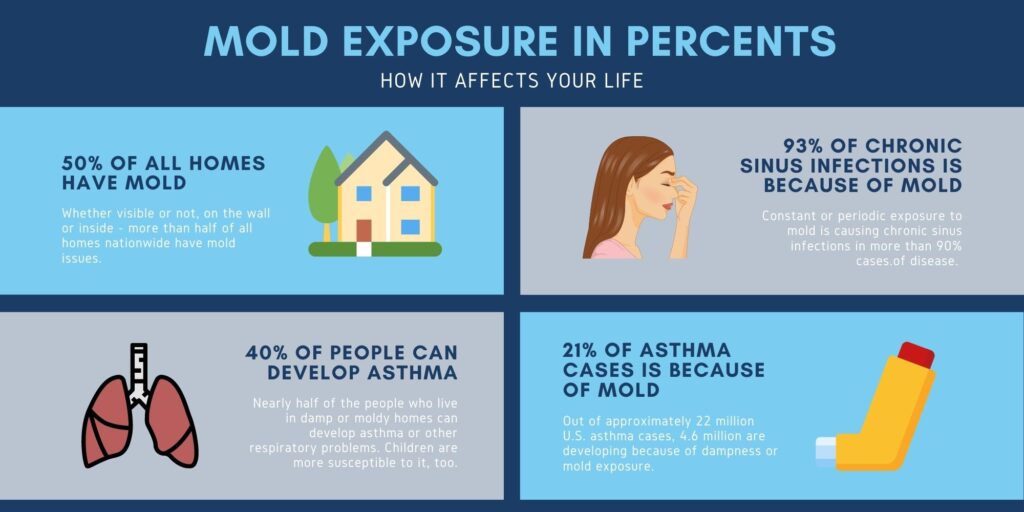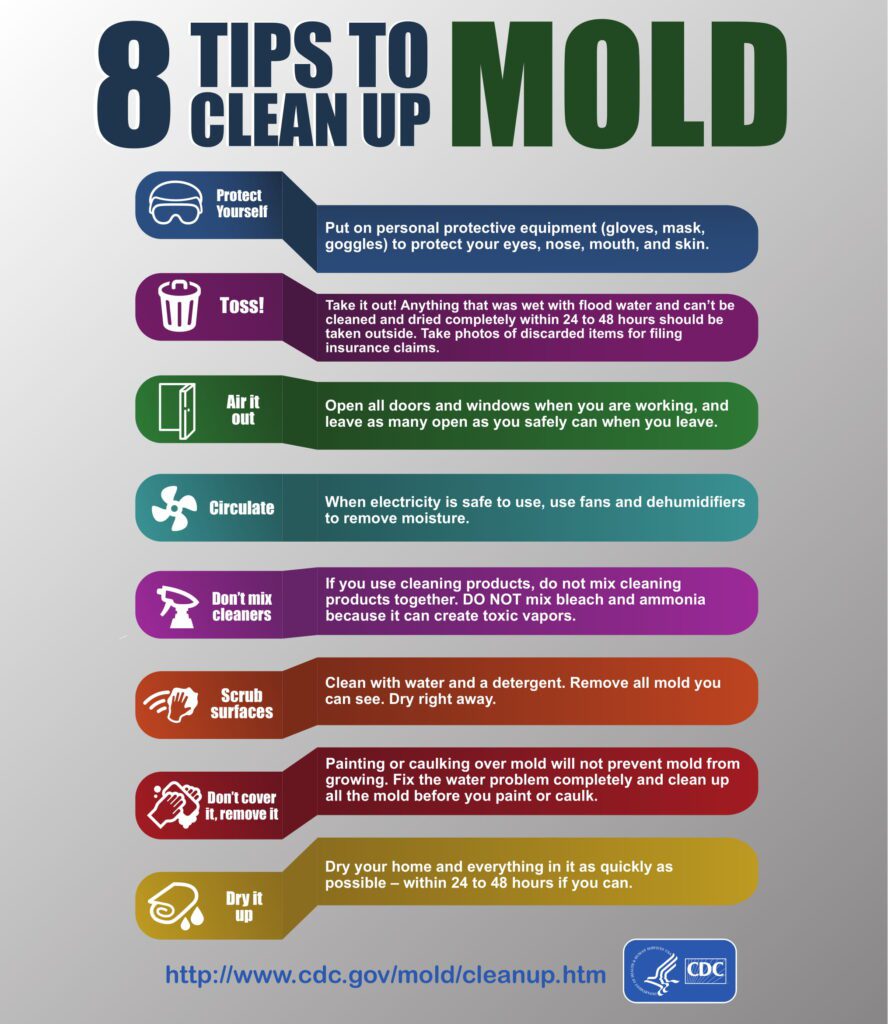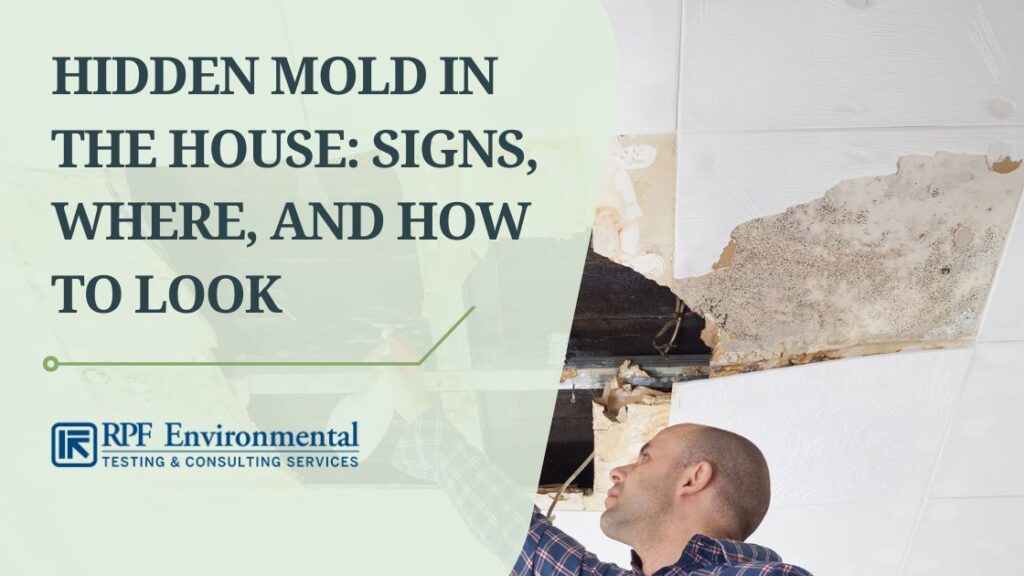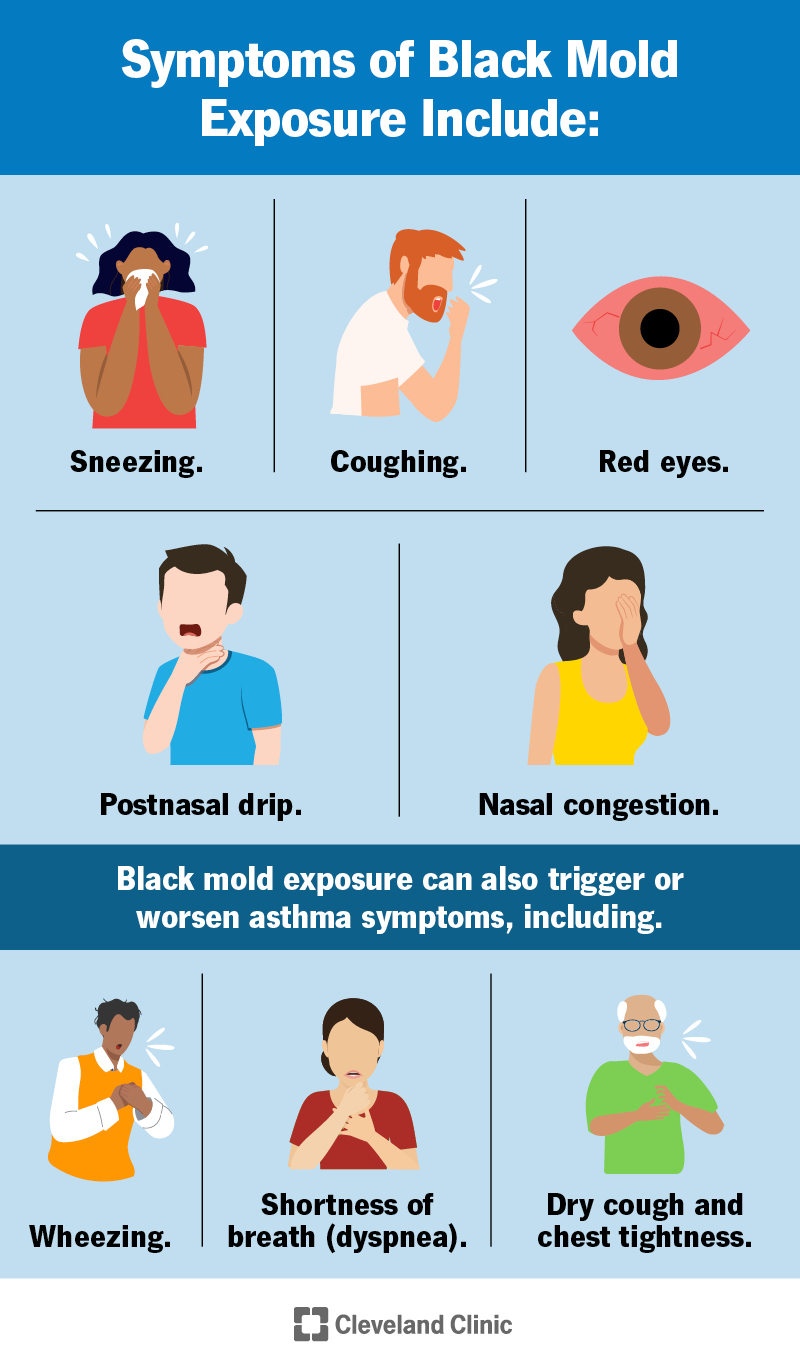Are you concerned about potential mold exposure in your home? In this article, we will explore the symptoms of mold exposure and provide helpful tips on how to detect and remediate mold contamination in your house. Whether you’re experiencing unexplained health issues or simply want to ensure a safe living environment for yourself and your loved ones, this article will equip you with the necessary information to address any mold-related concerns you may have. So, let’s dive in and learn more about detecting and treating mold contamination in your home!
Symptoms of Mold Exposure
Respiratory symptoms
Exposure to mold can lead to a range of respiratory symptoms. You may experience a persistent cough, wheezing, shortness of breath, or chest tightness. These symptoms can be particularly troublesome for individuals with pre-existing respiratory conditions, such as asthma or chronic obstructive pulmonary disease (COPD).
Allergic reactions
Mold is a common allergen and can trigger allergic reactions in many individuals. These reactions may include sneezing, runny nose, itchy and watery eyes, and skin rashes. If you notice these symptoms worsening or occurring when you are in specific areas of your home, it could be a sign of mold exposure.
Eye and skin irritation
Exposure to mold spores can cause irritation in the eyes and skin. You may experience redness, itchiness, and soreness in your eyes. Additionally, your skin may become red, itchy, or develop a rash upon contact with mold or mold-contaminated surfaces.
Headaches and dizziness
Some individuals may experience frequent headaches or dizziness as a result of mold exposure. These symptoms can be particularly troublesome if they occur indoors and improve when you spend time away from the mold-contaminated areas.
Fatigue and weakness
Mold exposure may contribute to feelings of fatigue and weakness. If you constantly feel tired or lack energy, even after getting enough sleep, it might be worth investigating whether mold is present in your home.
Detecting Mold Contamination
Visible signs of mold
One of the most obvious ways to detect mold contamination is through visible signs. Mold often appears as black or green patches on walls, ceilings, or other surfaces. If you notice any discoloration or unusual stains in your home, it’s important to investigate further to determine if the cause is mold.
Musty odor
Mold tends to emit a distinct musty odor. If you detect a lingering damp, earthy smell in your home, it could indicate the presence of mold. Pay close attention to areas such as basements, bathrooms, and kitchens, as they are more prone to dampness and mold growth.
Increased humidity levels
Mold thrives in environments with high humidity. If you consistently have high humidity levels in your home, it can create a favorable environment for mold to grow. Invest in a hygrometer to monitor the humidity levels and take steps to control it if it exceeds the recommended range (30-50% humidity).
Water leaks and moisture buildup
Water leaks and moisture buildup are major contributors to mold growth. Inspect your home regularly for any signs of leaks, such as water stains, peeling paint, or warped flooring. Additionally, check areas prone to moisture buildup, such as around windows, pipes, or in the bathroom, for any signs of mold.
Common Areas for Mold Growth
Bathrooms
Bathrooms provide the ideal environment for mold growth due to the presence of moisture from showers, baths, and sinks. Mold can often be found on walls, ceilings, or even in tile grout. Regularly clean and dry your bathroom to prevent mold from taking hold.
Basements
Basements are notorious for being dark and damp, making them prime spots for mold growth. Mold can develop on basement walls, floors, and even on stored items. Ensure your basement is well-ventilated, waterproofed, and regularly inspected for signs of mold.
Attics
Attics can be prone to mold growth due to inadequate ventilation and insulation. Roof leaks or excessive humidity in the attic can create the perfect conditions for mold to thrive. Regularly check your attic for any signs of water damage and implement proper ventilation to prevent mold growth.
Kitchens
The kitchen is another area where mold growth can occur, especially around sinks, appliances, or areas prone to water spills. Regularly clean and dry any moisture-prone surfaces in your kitchen to mitigate the risk of mold growth.
Laundry rooms
Laundry rooms frequently experience high moisture levels due to washing machines and dryers. If not properly ventilated, dampness can accumulate and promote mold growth. Regularly clean and maintain your laundry room to prevent mold from becoming a problem.
Testing for Mold
Professional mold testing
If you suspect mold contamination but cannot find visible signs, it may be necessary to hire a professional mold testing service. These professionals have the knowledge and equipment to conduct thorough testing, including air and surface sampling, to determine if mold is present and provide recommendations for remediation.
DIY mold testing kits
For those who prefer a more hands-on approach, DIY mold testing kits are available on the market. These kits typically include instructions and test materials to collect samples from your home. However, it’s important to note that DIY kits may not provide the same level of accuracy and comprehensive analysis as professional testing.
Air sampling
Air sampling is a common method used to detect mold spores in the air. Samples are collected using specialized equipment and sent to a laboratory for analysis. Air sampling can help identify the types and concentration of mold spores present in your home.
Surface sampling
Surface sampling involves collecting samples from visible mold growth or suspected areas of contamination. These samples are then analyzed in a laboratory to determine the type and extent of mold present. Surface sampling can help identify the severity of mold contamination and guide remediation efforts.

Preventing Mold Growth
Control indoor humidity
One of the most effective ways to prevent mold growth is by controlling indoor humidity levels. Use dehumidifiers in areas prone to moisture, such as basements and bathrooms. Ensure proper ventilation in your home by using exhaust fans in kitchens and bathrooms or opening windows when weather permits.
Proper ventilation
Proper ventilation is crucial in preventing mold growth. Ensure your home has adequate airflow by regularly cleaning vents, replacing air filters, and opening windows to promote air circulation. This can help prevent the buildup of excess moisture and reduce the risk of mold growth.
Repair leaks promptly
Water leaks, whether from pipes, roofs, or appliances, can quickly lead to mold growth if not addressed promptly. Regularly inspect your home for any signs of leaks and make repairs as soon as possible. Be vigilant and proactive in addressing any water-related issues to prevent mold from taking hold.
Use mold-resistant materials
When renovating or building, consider using mold-resistant materials. These materials are specifically designed to inhibit mold growth and can be used in areas prone to moisture, such as bathrooms or basements. Investing in mold-resistant materials can provide added protection against mold contamination.
Removing Mold
Small-scale mold remediation
For small areas of mold growth (less than 10 square feet), you can remove the mold yourself using appropriate safety precautions. This includes wearing protective gear such as gloves, goggles, and an N95 mask, and using a mixture of water and detergent or a mold-specific cleaning solution to scrub away the mold. Ensure proper ventilation during the process and dispose of any mold-infested materials properly.
Hiring professional remediation services
For larger areas of mold contamination or if you are unsure about tackling the remediation yourself, it is advisable to hire professional mold remediation services. These professionals have the expertise and specialized equipment to safely and effectively remove mold from your home, ensuring thorough remediation and minimizing the risk of further contamination.
Using appropriate protective gear
Whether you choose to tackle mold remediation yourself or hire professionals, it’s essential to use appropriate protective gear. This includes gloves, goggles, and respiratory protection, such as an N95 mask, to prevent inhalation or skin contact with mold spores.
Proper disposal of mold-infested materials
When removing mold-infested materials, it is crucial to dispose of them properly. Seal them in plastic bags to prevent the spread of mold spores and dispose of them in accordance with local waste management regulations. This helps prevent further contamination and reduces the risk of mold re-emergence.

Health Risks of Mold Exposure
Respiratory conditions
Exposure to mold can exacerbate respiratory conditions such as asthma or allergies. Individuals with pre-existing respiratory conditions may experience more frequent or severe symptoms when exposed to mold.
Allergic reactions
Mold is a common allergen and can trigger allergic reactions in susceptible individuals. These reactions can range from mild hay fever-like symptoms to more severe allergic responses.
Weakened immune system
Prolonged mold exposure can weaken the immune system, making individuals more susceptible to infections and other illnesses. This can be particularly concerning for individuals with compromised immune systems, such as those undergoing chemotherapy or with HIV/AIDS.
Neurological effects
Some research suggests that mold exposure may have neurological effects, although further studies are needed to fully understand the extent of these effects. However, it is believed that mold toxins can potentially impact cognitive function, memory, and mood.
Toxic mold exposure
Certain molds, such as Stachybotrys chartarum (commonly known as black mold), produce toxins known as mycotoxins. Prolonged exposure to high levels of these mycotoxins can lead to toxic mold exposure, which can cause severe health problems, including respiratory issues, neurological effects, and even organ damage.
When to Seek Medical Attention
Persisting symptoms
If you experience persistent symptoms related to mold exposure, such as respiratory issues or allergic reactions, it may be advisable to seek medical attention. A healthcare professional can assess your symptoms, conduct appropriate tests, and provide guidance on further treatment or management.
Severe reactions
If you experience severe allergic reactions or respiratory distress immediately after mold exposure, it is important to seek immediate medical attention. Symptoms such as difficulty breathing, chest pain, or severe skin rashes should not be ignored and require prompt evaluation by a medical professional.
Suspected toxic mold exposure
If you suspect you have been exposed to toxic mold, it is crucial to seek medical attention. Toxic mold exposure can have serious health consequences and may require specific medical interventions. A healthcare professional can assess your symptoms, conduct appropriate tests, and determine the best course of action.

Treating Mold-Related Health Problems
Allergy medications
For individuals experiencing allergic reactions to mold, allergy medications such as antihistamines or nasal sprays may provide relief. These medications can help alleviate common symptoms such as sneezing, runny nose, and itchy eyes.
Nasal sprays
Nasal sprays can be helpful in reducing nasal congestion and inflammation caused by mold exposure. They can provide targeted relief for nasal symptoms and improve overall breathing.
Asthma inhalers
Individuals with asthma may require the use of asthma inhalers to manage symptoms triggered by mold exposure. Inhalers containing both short-acting and long-acting bronchodilators can help open up airways and improve breathing.
Antihistamines
Antihistamines can help alleviate symptoms such as itching, redness, and hives caused by allergic reactions to mold. They work by blocking histamines, which are chemicals released during an allergic reaction.
Conclusion
Mold exposure can have significant health implications, ranging from respiratory symptoms and allergies to more severe health conditions. It is important to be aware of the symptoms of mold exposure, how to detect mold contamination in your home, and the steps you can take to prevent and remediate mold growth. If you experience persistent or severe symptoms related to mold exposure, it is advisable to seek medical attention to ensure appropriate treatment and management. By taking proactive measures to address mold issues, you can help create a healthier and safer living environment for you and your loved ones.

